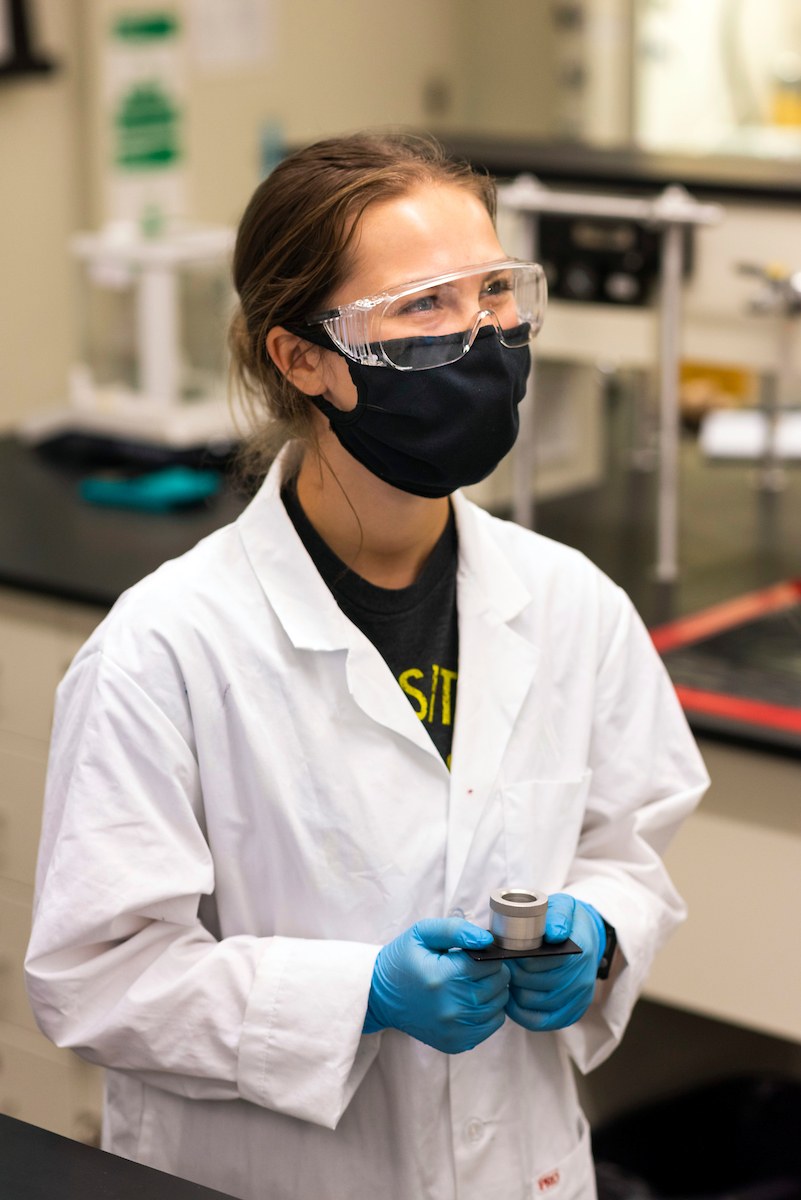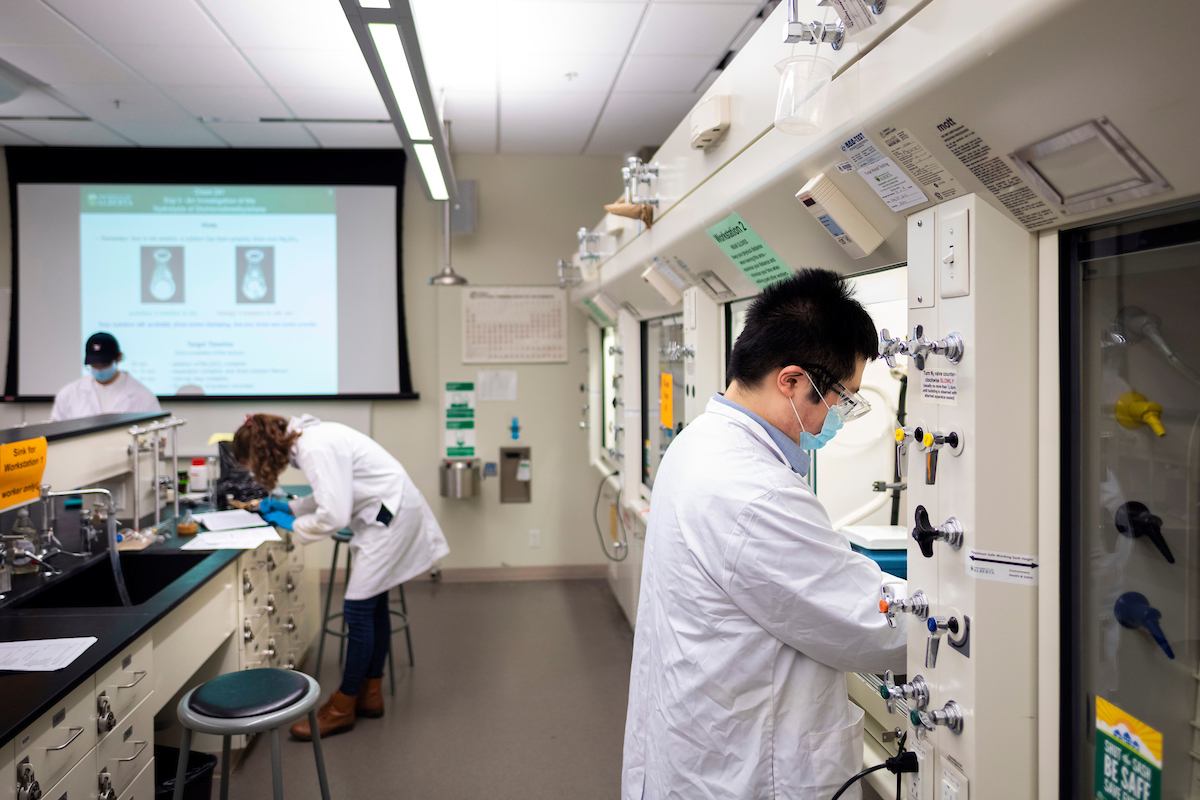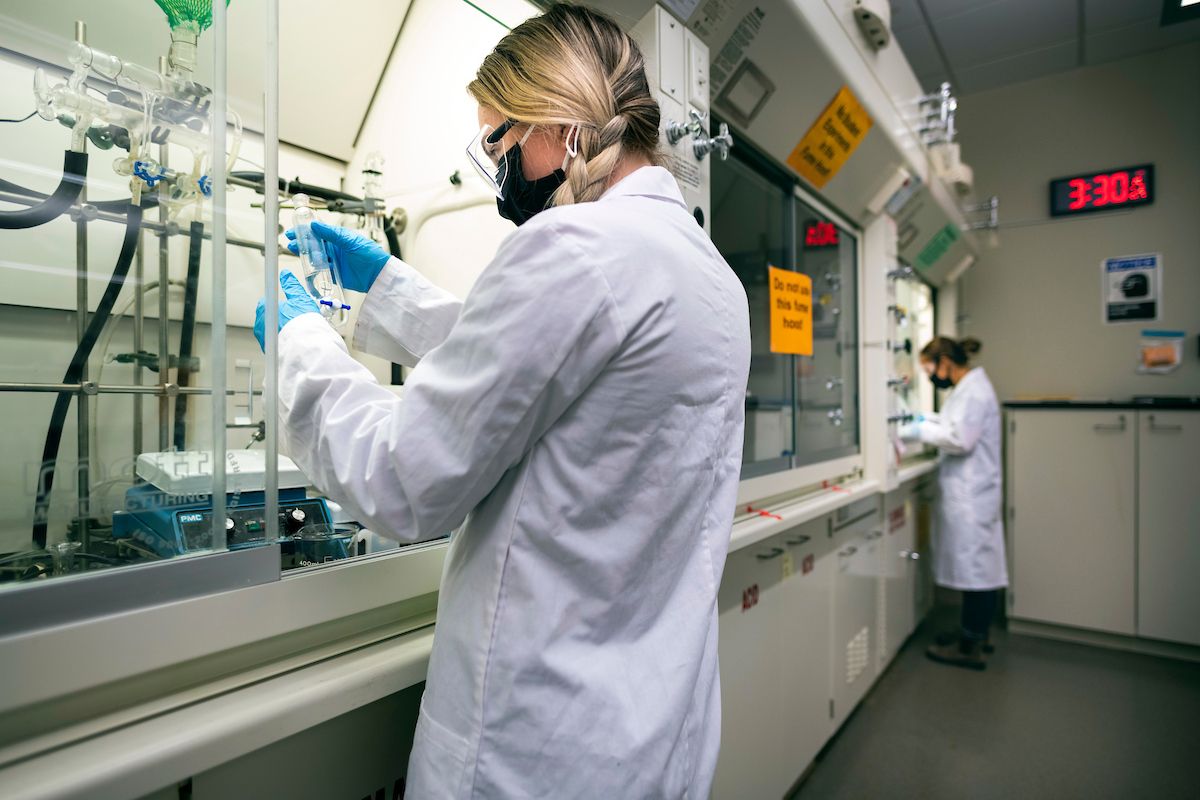Lab coat? Check. Safely glasses? Check. Face mask? Check.
While this year’s coursework in the lab may look a little different than usual, one thing remains the same—ensuring safety while giving students the opportunity to develop hands-on scientific skills. This mission has been supported by Gilead Sciences, whose generous donation of $100K USD through the Gilead CARES initiative is supporting lab skills education through the philanthropic hire of an online lab coordinator during COVID-19 and physical distancing guidelines.
Gilead, as a valued long-term partner, is making on-campus learning possible—while helping to keep our students safe.
"Gilead Alberta has a long-term relationship with the University of Alberta, and many of our staff-including myself-have completed at least part of their education at the university," said Greg Klak, vice president (operations) of Gilead Alberta in October 2019, when Gilead announced a $500K gift to the University of Alberta to renovate an undergraduate chemistry laboratory.
Join us as we hear from students and laboratory staff on how undergraduate chemistry labs are adapting to the COVID-19 pandemic in the University of Alberta’s Department of Chemistry.
The Fall 2020 semester has seen the majority of classes offered remotely and online, and the Winter 2021 semester will follow the same model. While most courses are offered at a distance, some in-person learning opportunities are being held where possible and where critical to the learning process—and chemistry labs are a perfect example.
“Students need hands-on lab experience to put into practice what they have learned in theory. If we do not provide students with hands-on lab experience, and they go on to higher level lab courses or lab-related careers, we could potentially be putting their safety at risk,” said Hayley Wan, director of undergraduate organic chemistry laboratories. “It would be analogous to a student taking a driving theory course and then being expected to know how to drive safely without ever physically being in a car.”
To ensure that students continue to have the opportunity to develop those skills and practice them safely, several core courses have been designated to include in-person labs, including Quantitative Analysis (CHEM 211), Introduction to Inorganic Chemistry (CHEM 241), Organic Chemistry (CHEM 361), and Energetics of Chemical Reactions (CHEM 371).
“Apart from the actual chemistry, almost everything is different this term. This presents challenges, but it is great to have the students back in the labs,” said lab coordinator Jason Cooke. “Seeing them engaged and learning is reward enough for the hard work by so many people that has gone into all of the preparations for a safe return to in-person labs.”
Students in in-person labs have the opportunity to work with teaching assistants and their peers to develop the following hands-on lab skills—all relevant to future lab courses and lab-based career paths:
- Operate instruments for carrying out thermodynamic measurements in real-life applications
- Maximize accuracy/precision in data collection and minimize accidents by adhering to the instruments' standard operating procedures and safety instructions
- Troubleshoot experimental setups when problems arise
- Analyze data with appropriate formulas and graphs, report results with an appropriate number of significant figures, and perform error analyses
- Retrieve accurate physical/chemical data from reliable resources when needed
- Relate experimental observations to theoretical concepts covered in the lectures
- Learn how to keep a proper scientific notebook
- Learn advanced synthetic chemistry techniques
What’s different?
If you’ve taken one of these courses, you may recall some of the hands-on skills you practiced in the lab, and suiting up before entering for safety. But, of course, this year’s labs look a little different.
“To accommodate the student enrolment numbers and still provide students with hands-on lab skills, we have had to reduce the number of in-person experiments,” explained Wan. “The students have been split into two groups and come to the lab on a rotation basis. On the weeks when the students are not performing in-person experiments, they are completing a virtual experiment online.”
Students that are unable to come to campus, including those that live outside Edmonton or outside of Canada, are able to review the material online and watch videos demonstrating skills. This approach also helps students that might have to quarantine according to Alberta Health Services guidelines. And inside the labs themselves, the situation looks different as well.
“We used to have 14 students in a lab section, and now we have 5. Each student works in their own fume hood, which is separated from the adjacent student by an empty fume hood to permit physical distancing,” explained Cooke of the approach in CHEM 241. “Because chemistry labs are a dynamic environment where workers must move around from time to time without advance warning, everyone must also wear face masks for the duration of the session.”
To balance the smaller class sizes, the labs have moved to three-hour lab periods held biweekly, rather than the usual ten-week curriculum, and focusing on the most critical techniques for student advancement.
The student experience
In fact, students are already providing feedback on the new experience.
“In-person labs are definitely different this year, but I wouldn't say it is a 'bad' kind of different,” said undergraduate student Abbie Rubletz, who is taking CHEM 371 this semester and is co-president of the Chemistry Student Association. “This is new for everyone: us students, our instructors, teaching assistants, lab coordinators, research groups—we're all learning how to function in these new circumstances together, in real-time. The amount of creative and collaborative problem solving I have seen come out of this already is nothing short of incredible, and I am excited about finally getting an opportunity to perform some of the experiments and techniques that I have learned in past chemistry classes.”
“While there are many restrictions and rules we need to follow to ensure the health of all of us, I'm still really glad that I get to do some hands-on work—it's something you don't really get with just the lecture portion,” said Yoojin Choi, also co-president of the Chemistry Student Association. “It's also very nice to actually meet people in the lab and discuss what we learned in the lectures. Overall, the in-person lab really gets me more confident in the course materials as well as lab practice.”
The lab coordinators and teaching assistants have put in many hours of work to ensure that the labs run smoothly—all in service of providing the best learning outcomes possible for students in this unprecedented time.
“I would like to assure our current and future students that all skill-sets achieved in the course will be very beneficial as they move forward through their degree and into their careers,” said lab coordinator Reza Poopari. “These are real skills that will serve them no matter where their education or career takes them.”
“Know that your safety and educational experience is our priority and we are doing everything we can to provide you with the best learning experience possible under these unprecedented times,” said Wan. “We hope that giving you the opportunity to come into the labs in-person—even with these restrictions—will provide you with all the necessary skills to be successful in your future careers.”
Undergraduate student Abbie Rubletz shares a closing message with all the faculty and staff working to make in-person labs happen this semester:
“I just really want to thank the instructors, teaching assistants, administrative staff, and everyone in the Department of Chemistry for their dedication and resilience,” said Rubletz. “It has been a tough year for all of us, but there is still so much more happening behind the scenes that students do not see. I cannot even imagine the time, effort, patience, and perseverance it would take to prepare and coordinate something like this. That hard work does not go unnoticed, and I have never been prouder to be a part of this department.”



